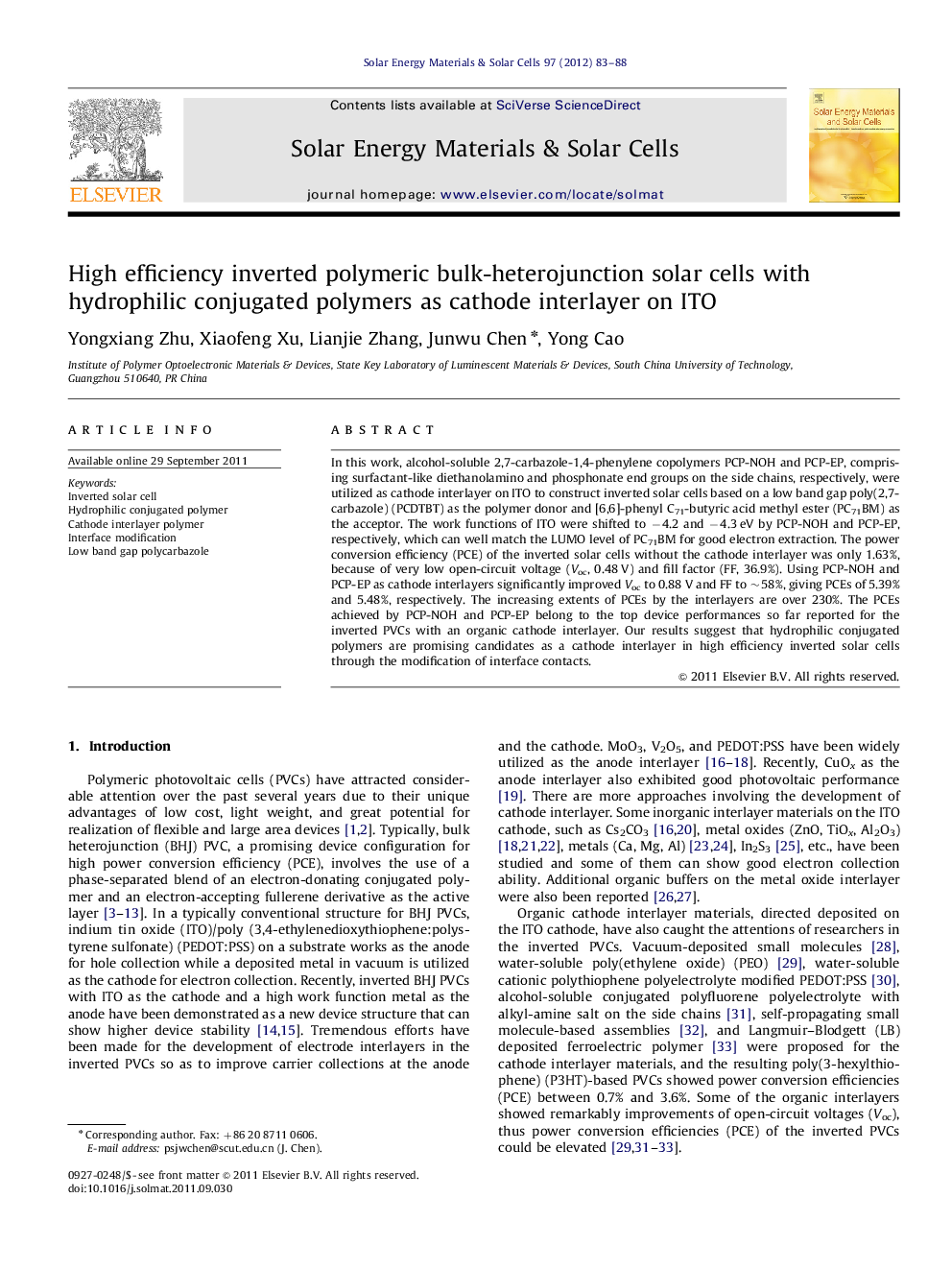| Article ID | Journal | Published Year | Pages | File Type |
|---|---|---|---|---|
| 78650 | Solar Energy Materials and Solar Cells | 2012 | 6 Pages |
In this work, alcohol-soluble 2,7-carbazole-1,4-phenylene copolymers PCP-NOH and PCP-EP, comprising surfactant-like diethanolamino and phosphonate end groups on the side chains, respectively, were utilized as cathode interlayer on ITO to construct inverted solar cells based on a low band gap poly(2,7-carbazole) (PCDTBT) as the polymer donor and [6,6]-phenyl C71-butyric acid methyl ester (PC71BM) as the acceptor. The work functions of ITO were shifted to −4.2 and −4.3 eV by PCP-NOH and PCP-EP, respectively, which can well match the LUMO level of PC71BM for good electron extraction. The power conversion efficiency (PCE) of the inverted solar cells without the cathode interlayer was only 1.63%, because of very low open-circuit voltage (Voc, 0.48 V) and fill factor (FF, 36.9%). Using PCP-NOH and PCP-EP as cathode interlayers significantly improved Voc to 0.88 V and FF to ∼58%, giving PCEs of 5.39% and 5.48%, respectively. The increasing extents of PCEs by the interlayers are over 230%. The PCEs achieved by PCP-NOH and PCP-EP belong to the top device performances so far reported for the inverted PVCs with an organic cathode interlayer. Our results suggest that hydrophilic conjugated polymers are promising candidates as a cathode interlayer in high efficiency inverted solar cells through the modification of interface contacts.
Graphical abstractFigure optionsDownload full-size imageDownload as PowerPoint slideHighlights► Hydrophilic conjugated polymer as cathode interlayer on ITO. ► Interlayer polymer shifts ITO work function to ∼4.3 eV. ► High efficiency inverted solar cells. ► PCE increasing 230% when compared with bare ITO.
